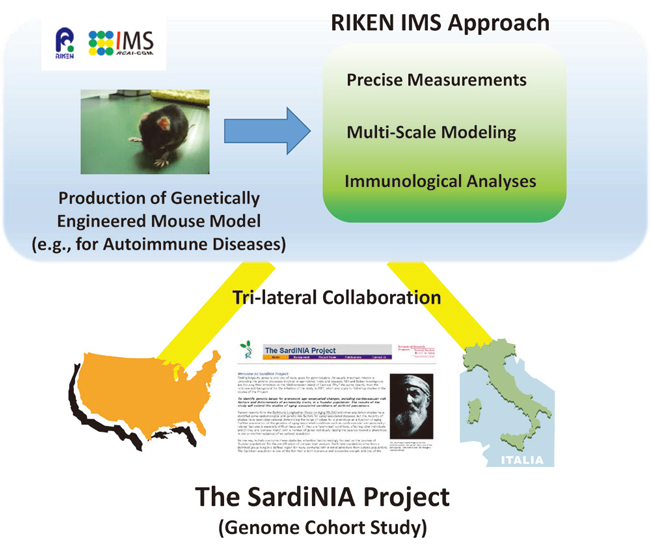Collaboration with the SardiNIA Project
Core for Precise Measuring and Modeling
The SardiNIA project was originally launched by the National Institute on Aging (NIA) in NIH (US) and Italian investigators (https://sardinia.irp.nia.nih.gov/) to unravel the genetic processes involved in age-related traits and diseases in people living on the Mediterranean island of Sardinia. As an extension of the SardiNIA project, they have focused on immune diseases and recently elucidated human genetic variations regulating immune cell levels in health and disease (Cell, 2013, 155(1):242-256). However, how variations in immune cell levels eventually result in immune diseases, e.g. autoimmunity, still remains unclear. Thus, to bridge the gap between immune cell levels and disease etiology, we have begun to collaborate with the SardiNIA group through generation of mice with genetic variations corresponding to those found in humans: Based on the human genetic variations identified by the SardiNIA group, genetically engineered mice have been designed and are under development at IMS. In addition, we have performed protein- protein interaction assays to evaluate the impact of the genetic variation(s) in the protein-coding region identified by the SardiNIA genome cohort at the molecular level. In this regard, the collaboration with the SardiNIA group serves as an extramural version of the on-going IMS projects, which aim to fill the gap between research in humans and mice. Thus, we have very good reasons to collaborate with the SardiNIA group toward our shared goal. We expect this tri-lateral collaboration will considerably enhance the international visibility of our "integrative medical science (IMS)" approach using animal models.

Figure: IMS Approach in a Tri-Lateral Collaboration with the SardiNIA Project
Links


